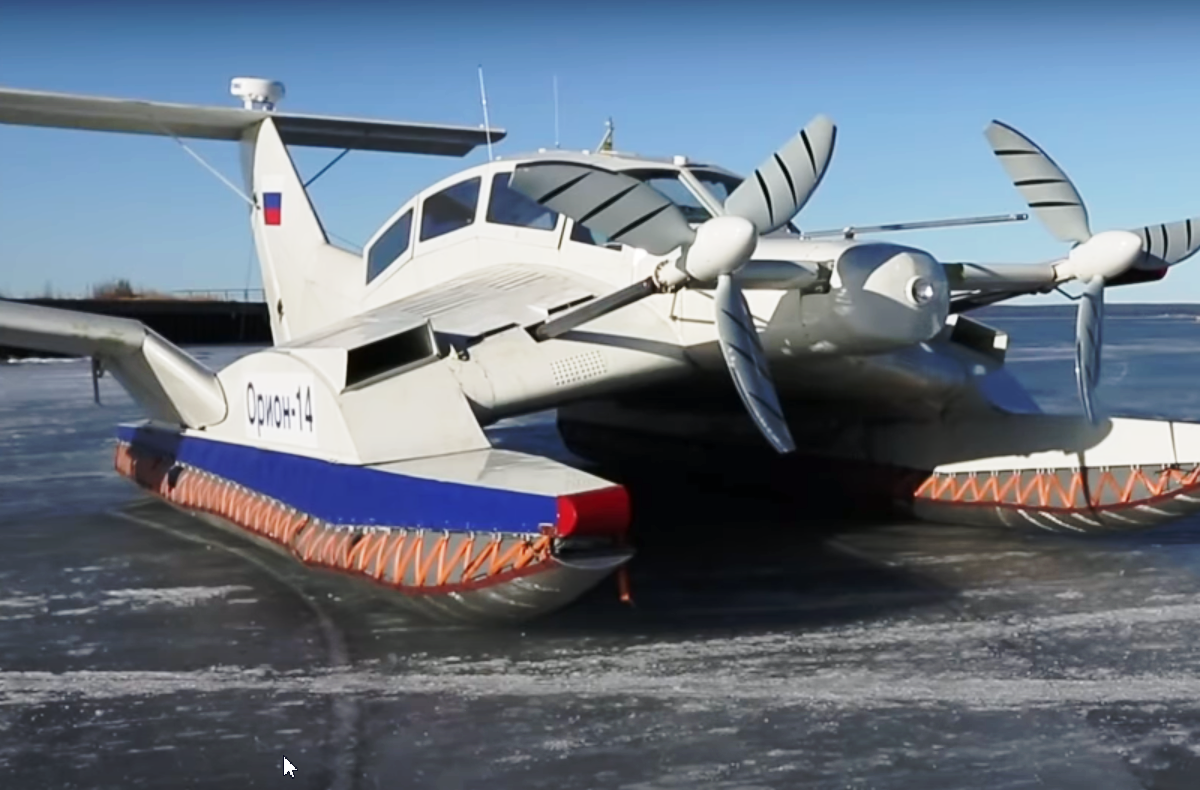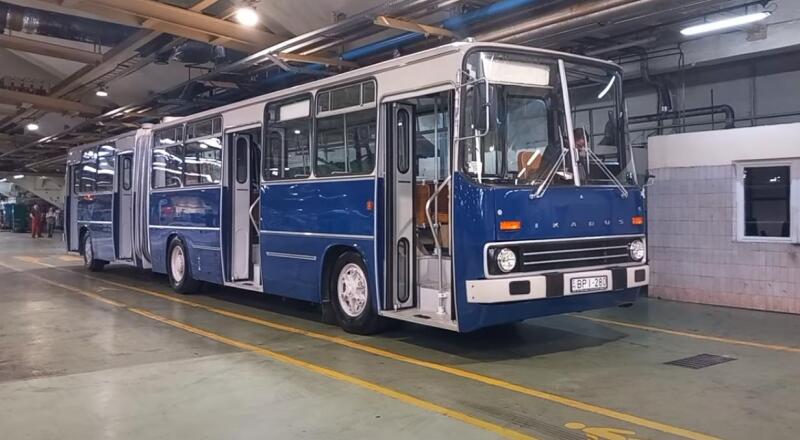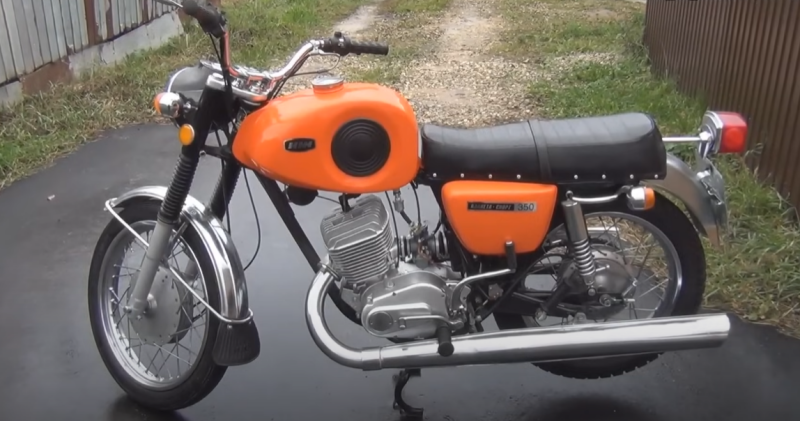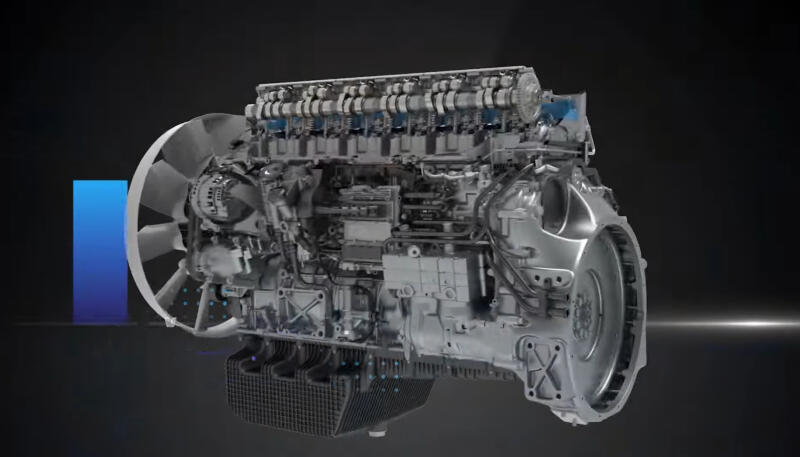This transport, which can be safely attributed to the number of hybrids or amphibians, has absorbed all the best from both aircraft and ships. Therefore, it was used in such operating conditions that are not available for conventional ships.
Over a century of its history, the ekranoplan has experienced a period of rapid popularity and oblivion. And today comes the understanding of its uniqueness. Let's remember together how it all began and see what we have today.
Screen effect at extremely low altitudes became the starting point
100 years ago, pilots, during a prolonged landing of an aircraft, drew attention to a sharp increase in wing lift, which was maintained precisely at ultra-low altitude. A similar cause has been cited as the culprit for several landing accidents. This happened with aircraft that had too low horizontal tail efficiency.
 This is how the screen effect occurs.youtube.com
This is how the screen effect occurs.youtube.comThe initial sightings were confirmed a few years later, in 1932. Then the 12-engine "Dornier Do X", which had an increased wing chord, showed amazing fuel economy and reduced aerodynamic drag. Around the same time, studies were carried out by Soviet scientists V.V. Golubev, Ya. M. Serebrisky and others.
Their result in 1932 was a 2-engine amphibious ekranoplan designed by aircraft designer Grokhovsky. The effect was also noticed by foreign scientists. So, 3 years later, the Kaario ekranoplan sleigh appeared, named after its Finnish creator.
But, the technical capabilities of that time did not allow creating a copy suitable for mass production. The lack of stability during flight at ultra-low altitude could lead to a high accident rate of the amphibian. And high speeds and the proximity of an aggressive environment required such a high anti-corrosion resistance, which the industry has not yet been able to provide.
Most countries refused further funding for projects, and excellent developments have survived only in the form of drawings. So for the first time the ekranoplan entered the period of oblivion. But, his time was still ahead!
History of Soviet ekranoplanes
Now it's hard to believe, but on the second day after the battle for the heart of our country broke out, a graduate of the Gorky Aviation Institute Alekseev began to defend his thesis on the topic: "hydrofoil glider". As you may have guessed, this was the prototype of the modern ekranoplan. After 10 years, it was he and his design bureau for the preparation of documentation for the creation of hydrofoil sea transport, who were awarded the highest Soviet award - the Stalin Prize.
 It all starts with the hard work of designers.youtube.com
It all starts with the hard work of designers.youtube.comBut the golden era of ultra-fast marine amphibians was yet to come. And it came already under the next Soviet leader, at a time when the country was able to recover a little from the consequences of a terrible war. For deep and systematic research work, a testing station was built at the Gorky Military District (IS-2). Its complex included special facilities for the study of the screen effect, which manifests itself under different operating conditions. Subsequently, Soviet developments moved in three main directions:
✅ Rostislav Alekseev Central Clinical Hospital
✅ KB im. Berieva (Taganrog)
✅ small samples of co-production of several KB
Ekranoplanes for the Soviet military
Although promising transport could have unconditional benefits from the use in the national economy, the times were still not the same. The Caribbean crisis and the further escalation of the Cold War prompted everything new to be put, first of all, on a war footing.
Therefore, in 1962, work began on the creation of a KM for military sailors. Two years later - T-1, designed for airborne troops. Moreover, the second one was no longer a classic ekranoplan, because it could gain altitude up to 7,5 km, transporting paratroopers to their destination.
 The sad state of former greatness.youtube.com
The sad state of former greatness.youtube.comIt is symbolic that on the eve of the 25th anniversary of the attack of fascist Germany on the USSR, the KM was launched into the water. This happened in the Caspian Sea, therefore, at the suggestion of the Americans, the abbreviation began to decipher as "Caspian monster". It became the largest aircraft on the planet at that time. In general, even now, more than 55 years later, it inspires respect with its huge dimensions:
✅ length over 92 meters
✅ wingspan - 37,6 m
✅ lifting weight record - 544 tons
The new monster made a favorable impression on Nikita Khrushchev, who was invited to test one of the prototypes (SM-2). Apparently, this was the main reason for the loyal attitude to the design of new ekranoplans, despite the considerable costs of public funds. Their production was included in the state program.
The first ekranolet
1972 was one of the most peaceful. Bacteriological weapons were banned and a peace treaty was concluded between the USSR and the FRG. For the first time, an American president came to the Union on an official visit. The Soviet military leaders believed that "thinking about peace, prepare for war." Therefore, in the same year, the first workable ekranolet "Eaglet" appeared. His goal was the transfer of amphibious assault to a distance of one and a half thousand kilometers.
 Ekranoplan control requires special skills.youtube.com
Ekranoplan control requires special skills.youtube.comSubsequently, over the course of 11 years, 5 more copies of military equipment of this type were manufactured. They formed the 11th separate air group under the command of the General Headquarters of Naval Aviation. If the Soviet plans were fully realized, then the number of ekranolet produced in Gorky and Feodosia would be increased to 24 pieces. The ekranoplan-launcher "Lun" became the "swan song" of the project. After 3 years of testing, he was admitted to trial operation. This happened in 1990. There was very little left before the collapse of the USSR. Let's remember the positive aspects of ekranoplans:
✅ enhanced safety (multiple engines, water landing capability)
✅ high movement speed
✅ economy
✅ do not need ground infrastructure
✅ do without a runway
But the model quite naturally has its weaknesses. Remarkably, this is due more to the external environment than to technical shortcomings:
✅ move in places with a large concentration of birds
✅ low maneuverability
✅ the impossibility of flying over too uneven surfaces
✅ management specifics
✅ flying at low altitude, in a dense atmosphere
Overseas projects
In the post-Soviet period, the production and development of ekranoplanes were frozen in our country, but others showed interest in them. For example, the United States, having received a significant warming and openness of relations from Russia in the 1990s, decided to take advantage of the favorable situation.
 Technology in action.youtube.com
Technology in action.youtube.comThe American Congress not only recognized the prospects of the project, but also initiated the creation of a special commission for the development and implementation of ekranoplanes. In order for the development of the industry, in which there was a lack of own experience, to proceed more rapidly, they turned to the Russian side for help. So American design engineers visited Kaspiysk, which allowed them to start developing ekranoletov of their own design. South Korean and Chinese developments of such technology are also known.
Modern history of Russian ekranoplanes
The Russian military is concerned that the armies of some countries in the future may be equipped with new, more powerful ekranoplanes. The question arose sharply, would the Russian side be able to offer something in return? If a federal special program does not appear, including a state order and full-fledged financing, then time may be lost. Russia will lose priority in the production of ekranoplanes.
An equally important role is given to this technique for peaceful purposes. It can become a new link in the global transport system and reduce the cost of goods transported from country to country. Which, in turn, will significantly revive trade. They can also become an indispensable link during rescue operations at sea.
 Modern history of ekranoplanes.youtube.com
Modern history of ekranoplanes.youtube.comThe developers of new models of equipment in the modern history of Russia were Amphibious Transport Technologies and the Arctic Trade and Transport Company. This is how the projects "Amfistar" and "Aquaglide" appeared. KB "Sky Plus" became the creator of a small ekranolet "Petrel-24". Its payload was 3,5 tons, and its capacity was 24 people. Everything shows that domestic designers are ready to meet the future boom of ekranoplan construction with their heads up.










